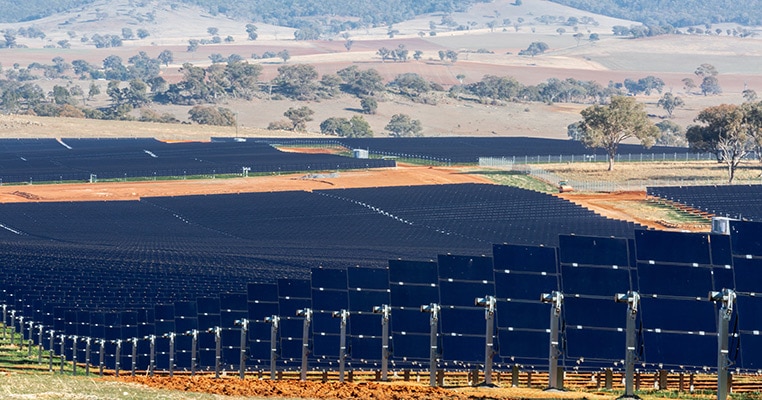ASX-listed New Energy Solar confirmed on Thursday it will offload its two Australian solar farms by the middle of the year after reporting a $74.3 million loss in 2020 and a strategic review recommended its exit from the Australian renewable energy market.
In announcing the company’s financial results for the year ending December 2020, New Energy Solar (NEW) CEO John Martin said the company would sell the 87 MW Beryl and 47 MW Manildra solar farms in New South Wales and exit the Australian market, opting to focus on the United States where it has a portfolio of 14 solar farms totalling 606 MW.
The move comes after the Australian-originated business appointed RBC Capital Markets last year to conduct a strategic review, triggered by the company trading at a deep discount to its net assets.
“Their initial recommendations were adopted and we … commenced the sale of the Australian assets and the exit from Australia,” Martin said.
“The US has a market that offers favourable regulatory and market settings for renewable energy.
“We had hoped to build NEW’s Australian portfolio but acquiring quality assets with long-term PPAs is more difficult in Australia. We concluded that we would not be able to achieve a business of scale here.”
NEW’s planned exit from the Australian market comes after a tough year for the investment entity which this week reported a net loss after tax of $79.1 million.
The company’s underlying earnings grew 36% in the year as new solar farms in the United States came online, but this was wiped out by the impact of reduced valuations of its solar portfolio with NEW forced to write down the value by $98.3 million on the back of falling expectations of future energy prices.
“A significant part of this reduction in value was recorded at the half year and resulted from the adoption of lower, long-term electricity price forecasts for the period 2025 to 2050,” NEW chair Jeffrey Whalan wrote in the annual financial report.
“Since the June half-year results, there has been a slight improvement in market forecasts of long-term US electricity prices but a further decline in forecasts of long-term Australian electricity prices”.
The devaluation of the US dollar against the Australian dollar also had a marked impact on valuations. During the 12 months ended December 31, 2020 the US dollar was 8.7% lower against the Australian dollar resulting in lower Australian dollar values for NEW’s US solar power plants and accounting for almost half of the decline in net asset value for FY 2020.
NEW said the sale of the Australian assets “is in hand” with the process expected to conclude in the first half of 2021.
This content is protected by copyright and may not be reused. If you want to cooperate with us and would like to reuse some of our content, please contact: editors@pv-magazine.com.









2 comments
By submitting this form you agree to pv magazine using your data for the purposes of publishing your comment.
Your personal data will only be disclosed or otherwise transmitted to third parties for the purposes of spam filtering or if this is necessary for technical maintenance of the website. Any other transfer to third parties will not take place unless this is justified on the basis of applicable data protection regulations or if pv magazine is legally obliged to do so.
You may revoke this consent at any time with effect for the future, in which case your personal data will be deleted immediately. Otherwise, your data will be deleted if pv magazine has processed your request or the purpose of data storage is fulfilled.
Further information on data privacy can be found in our Data Protection Policy.